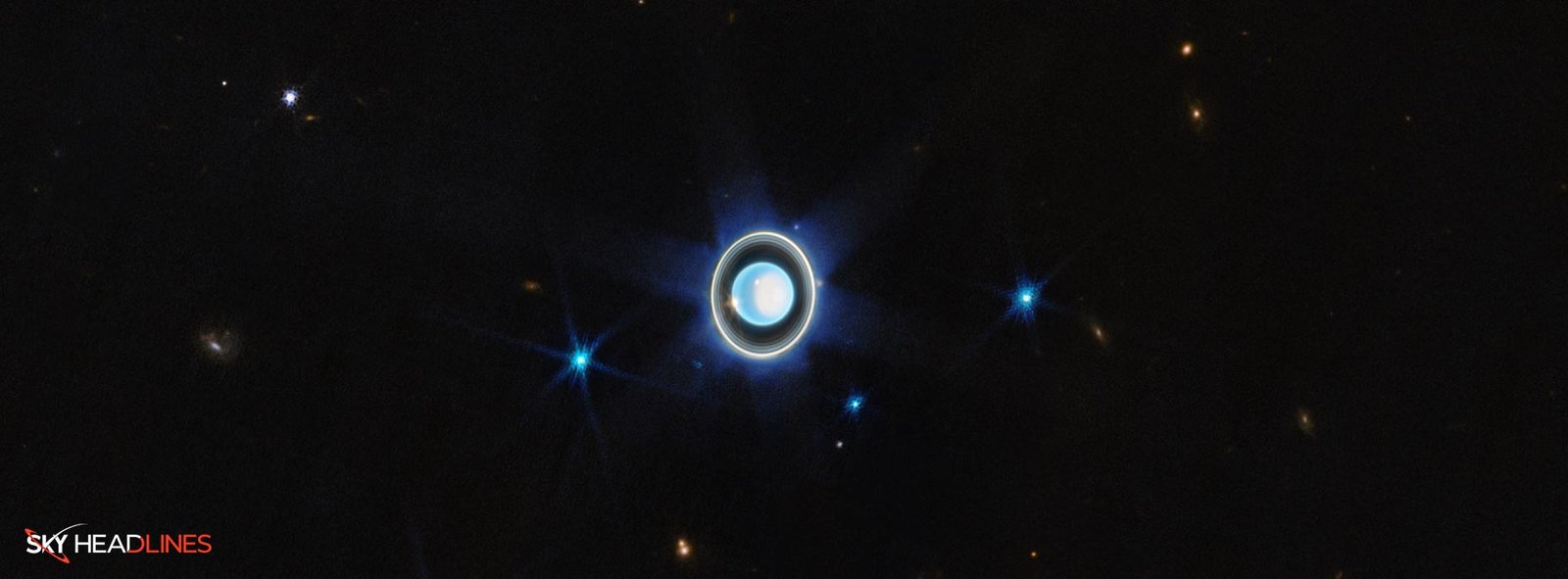NASA scientists have looked at data from Voyager spacecraft and used computer modeling to find out that four of Uranus’ biggest moons may have oceans between their icy crusts and cores. This study is the first to explain how the insides of all five big moons – Ariel, Umbriel, Titania, Oberon, and Miranda – have changed over time. According to the research, four moons have oceans that could be very deep, possibly spanning dozens of miles.
Uranus Moons and significance!
Uranus has 27 moons. The four biggest are Ariel, which is 720 miles (1,160 kilometers) across, and Titania, which is 980 miles (1,580 kilometers) across. Scientists believed that Titania, due to its size, would hold on to internal heat generated by radioactive decay.
Scientists used to think that the other moons were too tiny to keep their internal oceans from freezing. This was because Uranus’s gravitational pull doesn’t create much heat.
Why are scientists interested in studying Uranus’ ice giant?
In 2023, the National Academies’ Planetary Science and Astrobiology Decadal Survey decided that exploring Uranus should be a top priority. Scientists are studying Uranus’ ice giant to learn more about the Uranus system before a mission. A recent study published in the Journal of Geophysical Research could help plan future missions to explore Uranus’ moons.
Lead Author of the research paper:
The lead author, Julie Castillo-Rogez from NASA’s Jet Propulsion Laboratory in Southern California, also believes that the findings have broader implications beyond just Uranus.
“When it comes to small bodies – dwarf planets and moons – planetary scientists previously have found evidence of oceans in several unlikely places, including the dwarf planets Ceres and Pluto, and Saturn’s moon Mimas,” she said. “So there are mechanisms at play that we don’t fully understand. This paper investigates what those could be and how they are relevant to the many bodies in the solar system that could be rich in water but have limited internal heat.”
What study aims and what did NASA’s Voyager 2 spacecraft see when it flew past Uranus in the 1980s?
The study looked again at what NASA’s Voyager 2 spacecraft saw when it flew past Uranus in the 1980s, as well as what scientists observed from Earth. The authors used computer models that included information from NASA’s Galileo, Cassini, Dawn, and New Horizons missions.
These missions discovered ocean worlds and provided insights into the chemistry and geology of icy bodies like Saturn’s moon Enceladus, Pluto and its moon Charon, and Ceres. These icy bodies are around the same size as the moons of Uranus.
What did the scientists use to measure the porosity of the surfaces of Uranus’ moons?
The scientists used a model to measure the porosity of the surfaces of Uranus’ moons. They discovered that the moons are probably well-insulated, which means they could keep the necessary internal heat to have an ocean.
Discovery of Rocky Mantles:
Scientists have discovered that the rocky mantles of certain moons may contain a heat source that releases hot liquid. This could help maintain a warm environment in the moon’s ocean, making it more habitable. This is especially true for moons like Titania and Oberon, where the oceans may be warm enough to support life.
Scientists can learn about materials on icy moons by studying the composition of the oceans. This is because substances underneath might have been pushed up by geological activity. Telescopes have shown that Ariel, one of the moons, has material on its surface that may have come from icy volcanoes. This happened not too long ago.
What interesting feature study reveal about the Uranus moons?
Miranda, one of Uranus’ moons, has some interesting surface features that seem to be new. This could mean that Miranda was warm enough to have an ocean at some point. It’s also the fifth-largest moon. Recent thermal modeling suggests that Miranda probably doesn’t have water anymore because it loses heat too quickly and is now frozen.
Study finds chlorides and ammonia in icy giant moons’ oceans:
A moon’s subsurface ocean is not only caused by internal heat. The study found that the oceans of the largest moons of the icy giant likely have a lot of chlorides and ammonia. Ammonia can work as an antifreeze. The study shows that the salts found in the water could act as antifreeze and help keep the internal oceans of the bodies from freezing.
Of course, there still are a lot of questions about the large moons of Uranus, Castillo-Rogez said, adding that there is plenty more work to be done: “We need to develop new models for different assumptions on the origin of the moons to guide planning for future observations.”
What is the purpose of exploring the surfaces and interiors of moons?
Scientists and engineers need to explore the moons’ surfaces and interiors to decide which science instruments to use for studying them. If there’s a chance of finding ammonia and chlorides, spectrometers should use a wavelength range that can detect both compounds. Spectrometers work by detecting compounds through their reflected light.
Help engineers create scientific Equipment for exploration:
They can also use this knowledge to create tools that can explore the deep interior and detect liquid. Scientists found a deep ocean on Jupiter’s moon Europa by looking for electrical currents that create a magnetic field. However, the freezing water of moons like Ariel and Umbriel’s internal oceans may render them less able to carry these electrical currents, presenting a fresh barrier for scientists trying to understand what lies beneath.





